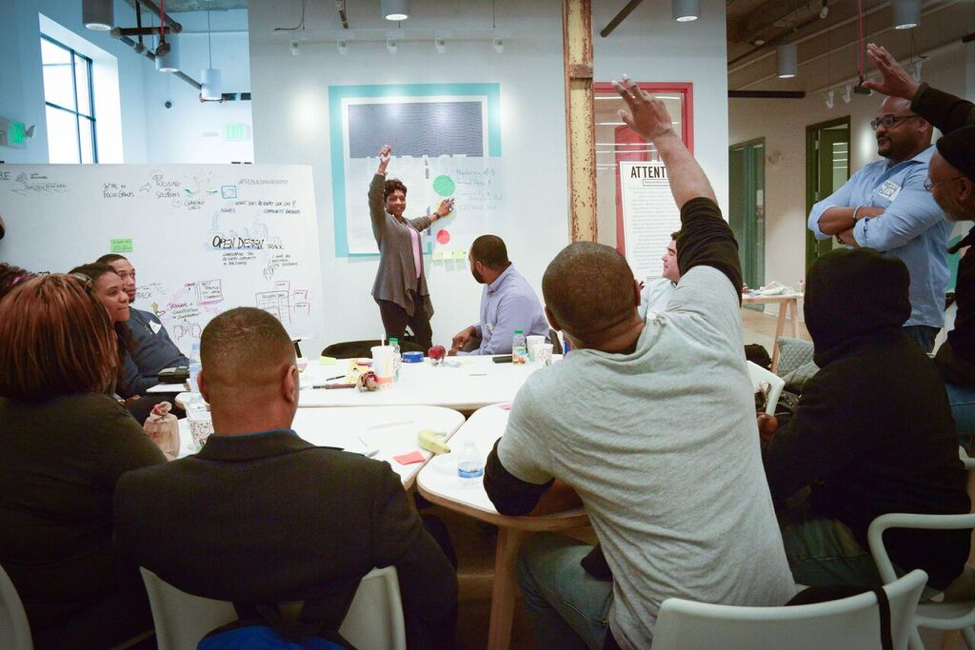Public institutions are struggling for legitimacy. Ours is a moment defined by a technological shift that is producing massive amounts of digital data and increased demand to produce more of it. As a result, there is an increased expectation of transparency, and real need for public institutions to “open up” and become more responsive. This is why there has been such an emphasis on increasing public participation and instantiating community engagement efforts in cities: it’s not just because it’s the right thing to do, but also a veritable necessity for institutions to weather major technological, social, and cultural changes.

We can understand this moment as being comprised of two opposing forces: on one hand, an extraordinary bounty of data and the compulsion to create smarter and better analytics for more efficient and responsive institutions, and on the other hand, deep and resounding community connections, rising of oppositional voices (i.e. Black Lives Matter, Occupy Wall Street, etc.), and people-centered processes. As a result, cities and town in the United States have been grappling with the demand for increased technological efficiency and transparency, just as they have been struggling to make institutions “more human,” “more relatable,” more meaningfully inefficient.
But here’s the problem: the institutional language of engagement has been defined by its measurement: chief engagement officers in corporations are measuring milliseconds on web pages, and clicks on ads, and not relations among people. This is disproportionately influencing the values of democracy and the responsibility of public institutions to protect them. Too often, when government talks about engagement, it is talking about those things that are measurable, but it is providing mandates to employees imbued with ambiguity. Departments are rewarded for quantifiable efficiency, not relationships. Just because something is called engagement, this fundamental truth won’t change.

This document is informed by the work of teams in five cities: Atlanta, Albuquerque, Baltimore, New Orleans and Seattle. Each of their efforts reflects a tension between the mandate for measurable public engagement, on one hand, and meaningful relationships on the other. Ultimately, each produced a bit of both: numbers to recount and relationships fostered and nurtured by local government that have the potential for lasting, but likely immeasurable, impact on people. While both of these things matter, chances are any given department is going to focus on increased efficiency and measurability, while downplaying relation and meaning-making.
At the end of the day, who is going to care about government? How do you get people to care about the services that government provides? How do you get people to care about the health outcomes in their neighborhoods? How do you get people to care about ensuring accessible, high-quality public education? These are the questions that matter. What is laid out in this document is a roadmap to caring. When government talks about civic engagement, it should really be talking about caring.
But let me take it one step further. When someone cares about something, they make a decision to be attentive to that thing. But “caring about” is one end of what we might call a spectrum of caring. On the other end, there is “caring for,” when, as described by philosopher Nel Noddings, “what we do depends not upon rules, or at least not wholly on rules--not upon a prior determination of what is fair or equitable--but upon a constellation of conditions that is viewed through both the eyes of the one-caring and the eyes of the cared-for.”19 In short, caring-for is relational. When one cares for another, the outcomes of an encounter are not predetermined, but arise through relation. If government is truly to adopt an ethic that is inclusive and responsive, it needs to be cautious of the language of engagement, which implies attentiveness, but also, as it is used so commonly in the private sector, a kind of captivity. To engage customers is to grab them, to assimilate them into a system, and make them compliant. In the public sector, the goal should be to care for communities, and to nurture outcomes based on relations, not pre-conceived ideals. There is a reciprocity that is important to achieve - if government in the American ideal is of the people and for the people, then the challenge of government institutions is to develop programs, services, and opportunities for people to “care for” and feel “cared about” by the people.
"When government talks about civic engagement, it should really be talking about caring."
This is caring for civics. I mean this in two ways: First, civic life, and the public institutions that mediate it, is in transition. It is going to require organizational and thought leadership to care for it. And there is need to think beyond engagement as a matter of market efficiency. Second, we need to instantiate a “caring-for” civics. This is an approach to civic life that is fundamentally relational, where public institutions create value systems and metrics that support long term relationship building in addition to short term attention. If we consider the work of government as operating within this spectrum of caring, from caring about to caring for, then we can better understand the tensions presented by our particular moment. It is important that people care about government and their community; it is more important that people care for their communities, where their attention is transformed into responsibility and connection. Caring for civics is the guiding value for 21st century governance.
Notes
19 Nel Noddings, Caring: A Relational Approach to Ethics and Moral Education, Berkeley: University of California Press, 2013, p. 12.
